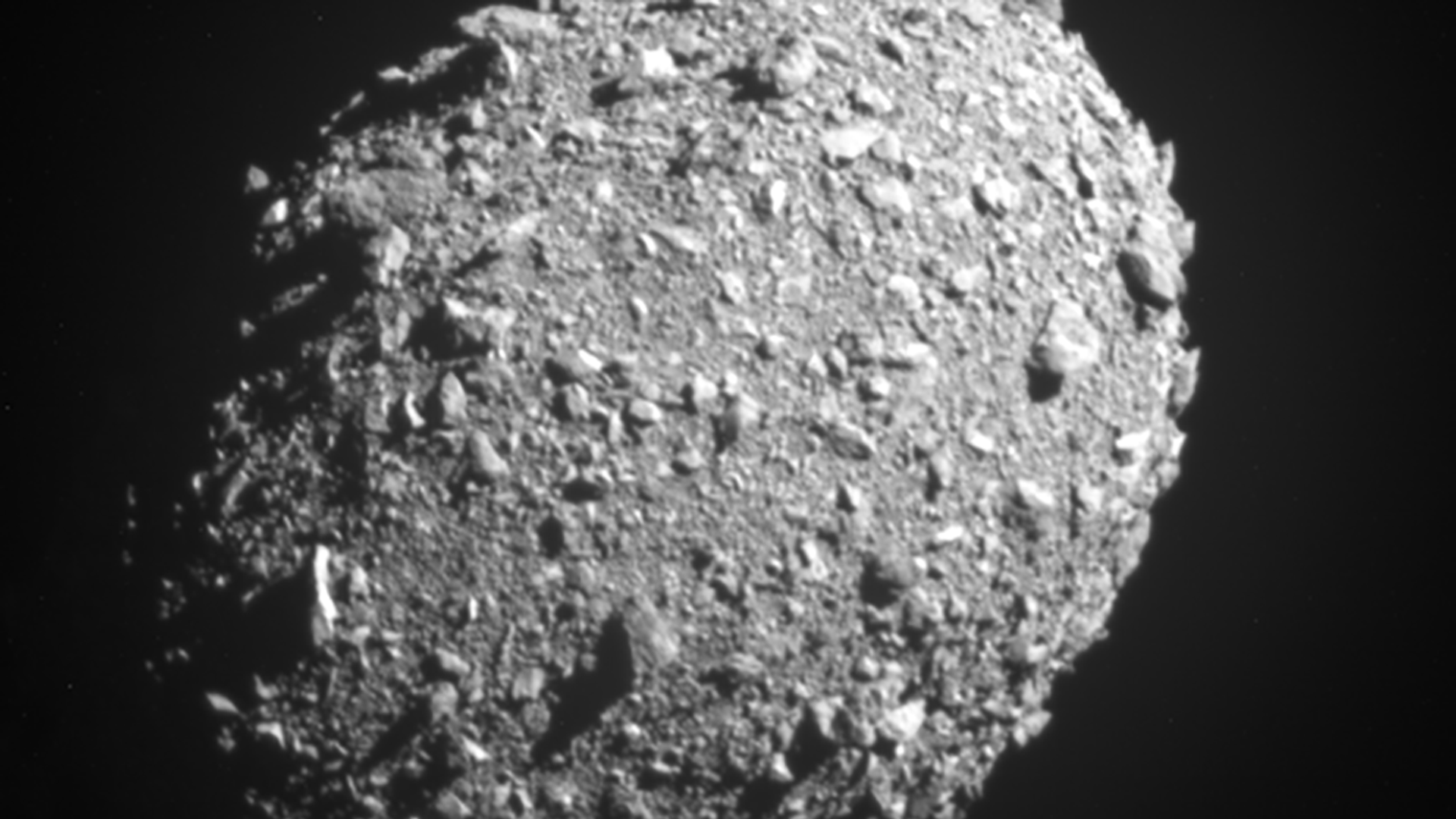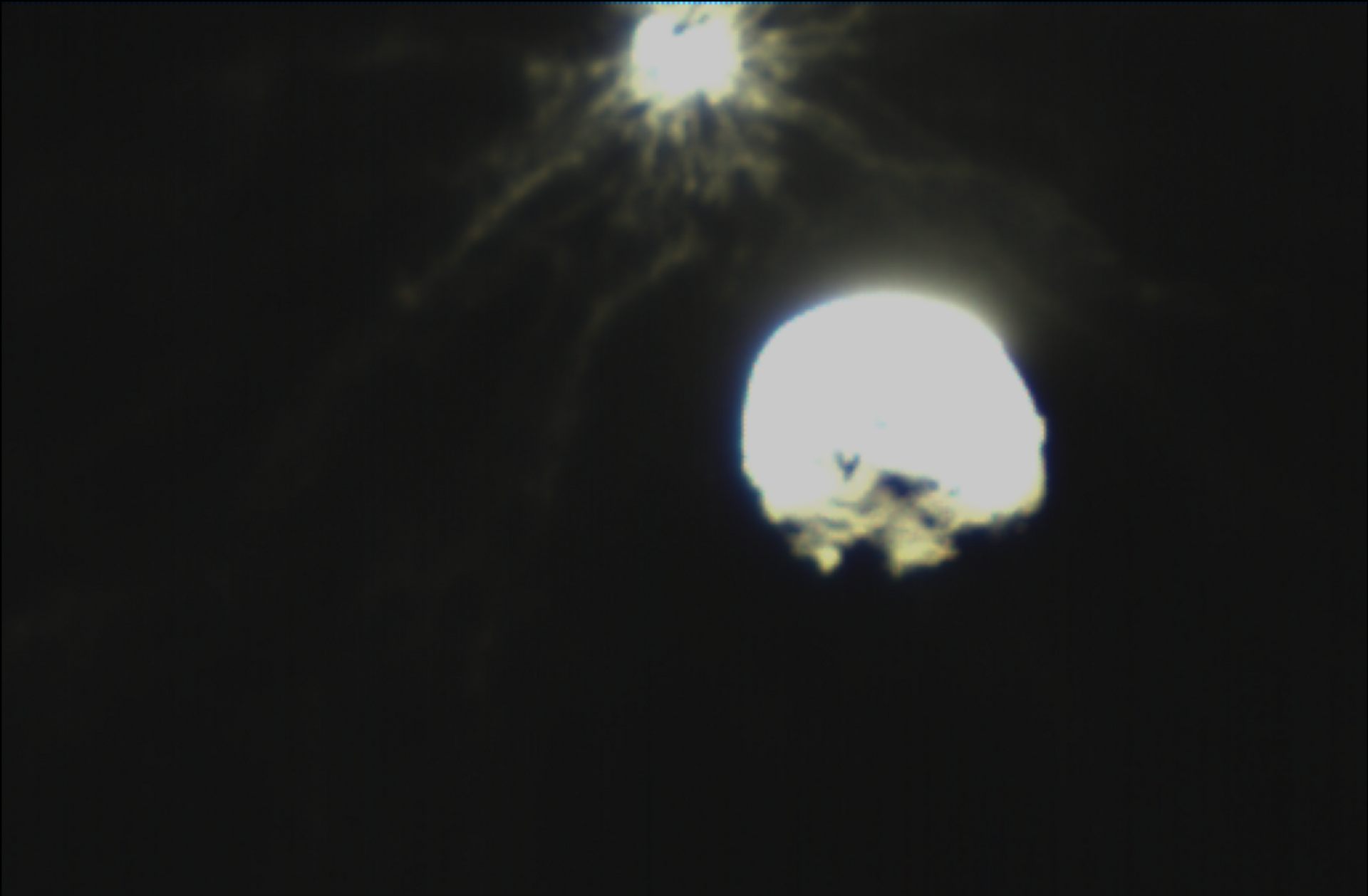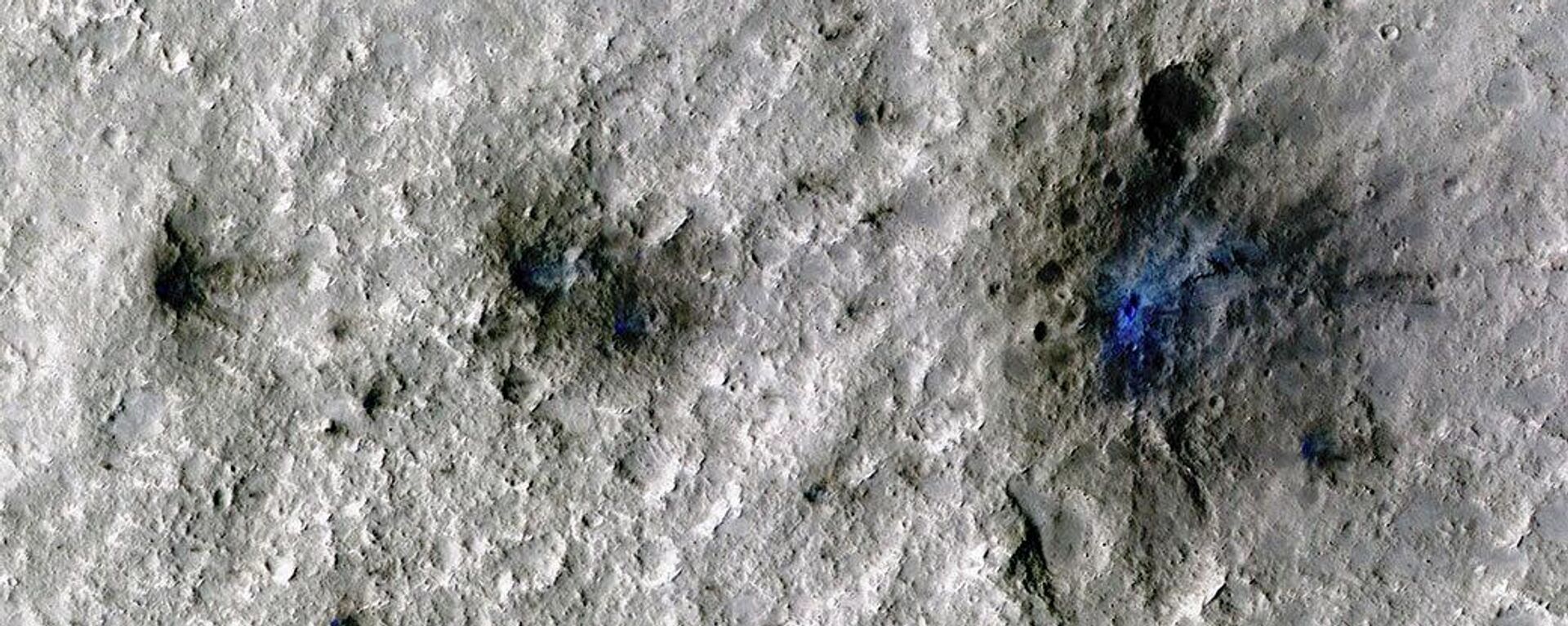Big Bada Boom! Italian Satellite Releases First Images on NASA's DART Spacecraft Hitting Asteroid
04:17 GMT 28.09.2022 (Updated: 17:11 GMT 20.06.2023)

© NASA . NASA/Johns Hopkins APL
Subscribe
The Double Asteroid Redirection Test (DART) project, which was a significant turning point in NASA's planetary defense program, was the first time humans had ever altered the course of a celestial body. The DART mission's technology may one day be used to divert an asteroid from colliding with Earth.
The first pictures of the immediate aftermath of NASA's first-ever experiment on Monday, which involved crashing a spaceship into an asteroid, were made public by the Italian space agency on Tuesday.
The images were taken by the agency's LICIACube micro-satellite, which had two cameras and was launched by DART a few days before impact. Just a few minutes after the collision, the little satellite flew by asteroid Dimorphos, which was the target of the impact, to gather the pictures.
The photos show what looks to be a crater and large ejecta streaks, which are surface debris on Dimorphos.
Le prime spettacolari immagini realizzate da @LICIACube dell'impatto di #DARTMission su #Dimorphos @mediainaf @NASA
— Agenzia Spaziale ITA (@ASI_spazio) September 27, 2022
Guarda la fotogallery👇https://t.co/2JWJxvD5TF pic.twitter.com/eJ8M6rt2oK

Image captured by the Italian Space Agency’s LICIACube a few minutes after the intentional collision of NASA’s Double Asteroid Redirection Test (DART) mission with its target asteroid, Dimorphos, captured on Sept. 26, 2022.
© NASA . ASI/NASA
Despite the rarity of asteroid collisions, a large space rock's impact could cause significant local or regional devastation.
The intention of the impact was to alter the orbit of the moonlet asteroid Dimorphos around the larger space rock Didymos. Neither poses a threat to our planet anytime in the future. About 11 million kilometers separate the Earth from this pair of asteroids.
Before the collision, experts predicted that the DART crash would blast between 9,979 and 99,790 kilograms of ejecta into space and carve a crater on the asteroid.
Don't want to miss a thing? Watch the final moments from the #DARTMission on its collision course with asteroid Dimporphos. pic.twitter.com/2qbVMnqQrD
— NASA (@NASA) September 26, 2022
Here are the first images taken by #LICIACube of #DARTmission impact on asteroid #Dimorphos.
— LICIACube (@LICIACube) September 27, 2022
Now weeks and months of hard work are now starting for scientists and technicians involved in this mission, so stay tuned because we will have a lot to tell! pic.twitter.com/kVz1WmcsL7
More photographs of the collision's aftermath may be published since the Hubble Space Telescope, James Webb Space Telescope, and other ground telescopes were aimed at the system to observe the impact.
FromATLAS ground based telescope: pic.twitter.com/IQxWn9aZOk
— AndroidHippy 🔭 (@DeepDeepThought) September 27, 2022
To precisely assess how much the impact changed Dimorphos' orbit around Didymos, weeks of observation of the asteroid pair will be necessary, according to NASA.

